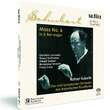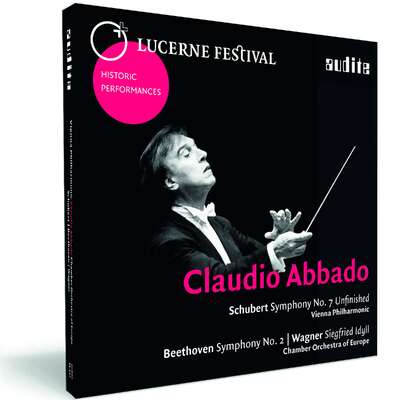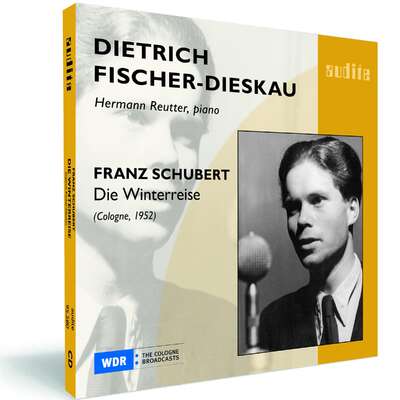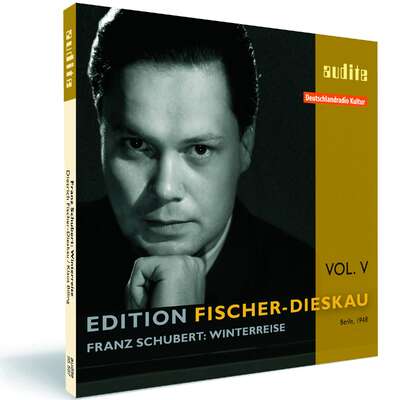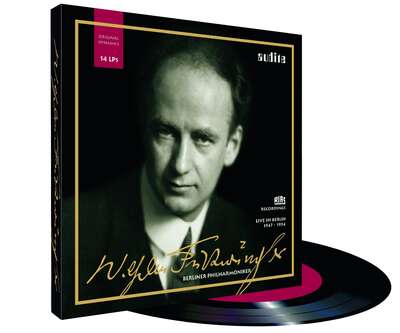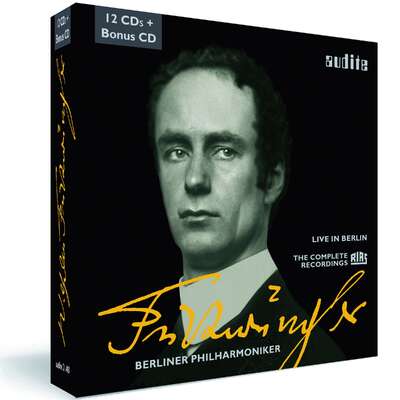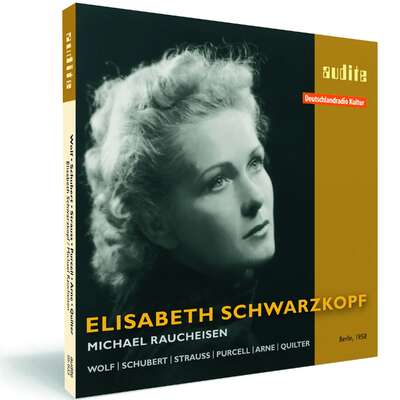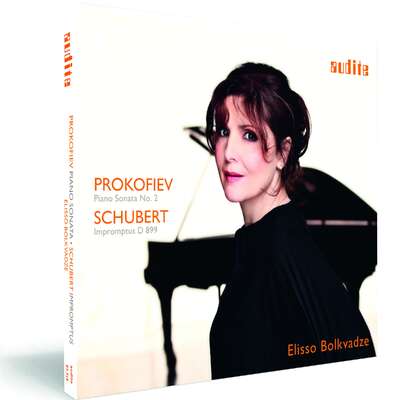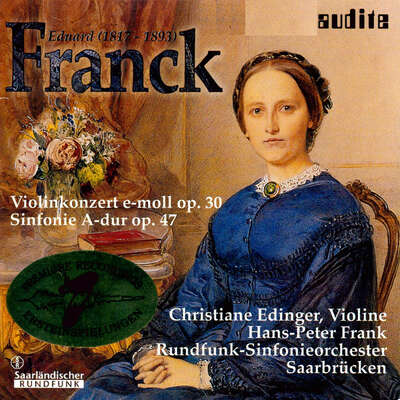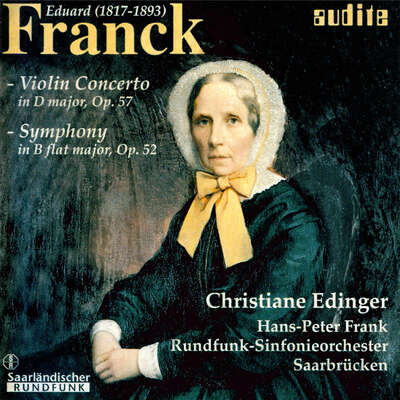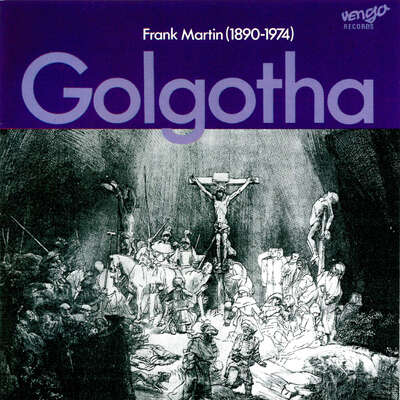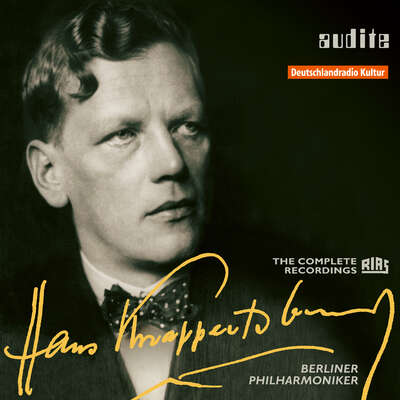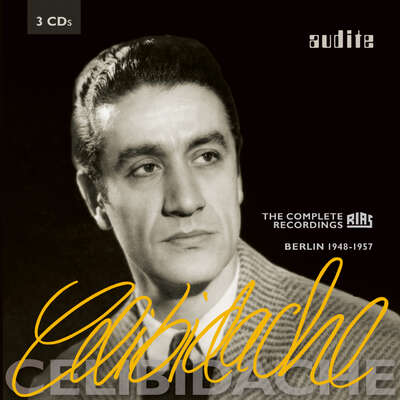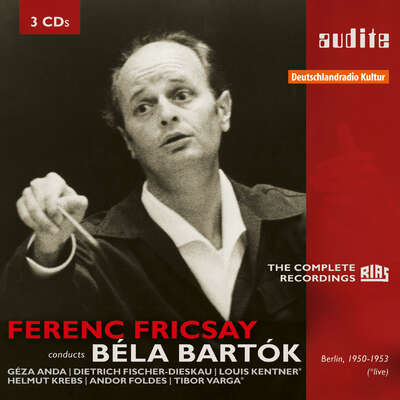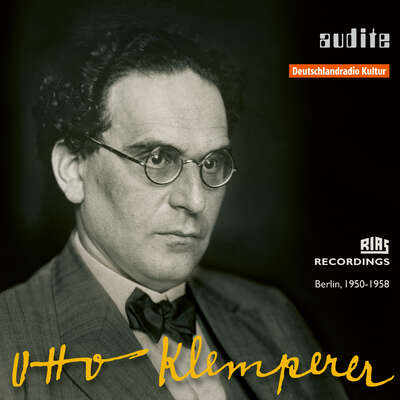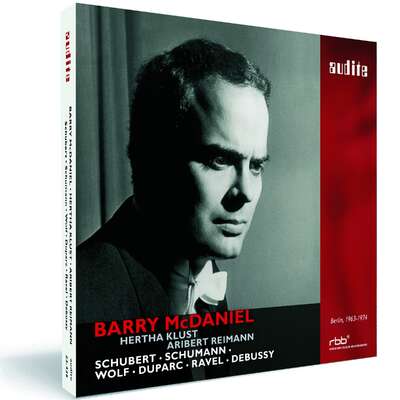
Schuberts Es-Dur Messe entstand in seinem letzten Lebensjahr 1828. Auch wenn Schubert sich nach dem Auszug aus dem Elternhaus von der bigotten Frömmigkeit des Vaters distanzierte, blieb Religion für ihn dennoch eine existentielle Privatangelegenheit. Den eigenen Glauben dokumentierte er hin und...mehr
Schuberts Es-Dur Messe entstand in seinem letzten Lebensjahr 1828. Auch wenn Schubert sich nach dem Auszug aus dem Elternhaus von der bigotten Frömmigkeit des Vaters distanzierte, blieb Religion für ihn dennoch eine existentielle Privatangelegenheit. Den eigenen Glauben dokumentierte er hin und...
Details
| Franz Schubert: Mass No. 6 in E-flat major, D 950 | |
| Artikelnummer: | 92.541 |
|---|---|
| EAN-Code: | 4022143925411 |
| Preisgruppe: | ACX |
| Veröffentlichungsdatum: | 1. Juni 2005 |
| Spielzeit: | 53 min. |
Informationen
Schuberts Es-Dur Messe entstand in seinem letzten Lebensjahr 1828. Auch wenn Schubert sich nach dem Auszug aus dem Elternhaus von der bigotten Frömmigkeit des Vaters distanzierte, blieb Religion für ihn dennoch eine existentielle Privatangelegenheit. Den eigenen Glauben dokumentierte er hin und wieder in seinen Werken: „Auch wunderte man sich sehr über meine Frömmigkeit, die ich in einer Hymne an die heil. Jungfrau ausgedrückt habe, und, wie es scheint alle Gemüter ergreift und zur Andacht stimmt."
Mit ihrer Länge von ca. einer Stunde sprengt die Messe den zeitlichen Rahmen der katholischen Liturgie -eine souveräne Überschreitung des vorgegebenen formalen Spielraums. Das Kyrie, das die Messe mit einem schreitenden Rhythmus in den tiefen Streichern und weichen Posaunenakkorden eröffnet, entfaltet gleich den großen Atem, mit dem Schubert Form und Ausdehnung der Messe zur sinfonischen Dimension erweitert.
Die solistischen Partien sind keineswegs reich auskomponiert, vielmehr wirken sie manches Mal wie eingebettet in das chorische Gesamtgeschehen; nicht die opernhafte Exponierung der Solisten und ihrer Virtuosität stand für Schubert im Vordergrund, sondern der klangliche Wechsel zwischen Solist und Gesangsensemble im Chor der Gläubigen. Schubert bemüht sich insgesamt um einen Ausgleich zwischen der klassischen Wiener Sakralmusik-Tradition, den Forderungen des Klerus und den eigenen musikalischen Zielen. Zu den Zugeständnissen an die Sakralmusik gehören zweifellos die beiden ausgedehnten Fugen am Ende des Gloria und des Credo. Anders als in seinen späten Sinfonien scheint Schubert in der Messe nach einer neuen Interpretation der alten Formen zu suchen.
Die Live-Aufnahme vom 22.März 1968 aus dem Herkules-Saal der Münchner Residenz mit Rafael Kubelik und dem Symphonie-Orchester des Bayerischen Rundfunks erscheint im SACD Format. Sie ist die Fortsetzung der Reihe „LISTEN & COMPARE", die dem SACD-Hörer neben der überarbeiteten Fassung auch die völlig ursprünglich belassene Archivaufnahme zum direkten Vergleich anbietet.
Besprechungen
www.SA-CD.net | March 30, 2010 | John Miller | 30. März 2010
Schubert penned this last, and some would say the greatest, of his sacredMehr lesen
CD Compact | Año 20, Nº 198 Mayo 2006 | Jesús Dini | 1. Mai 2006
Schubert terminó su maravillosa misa en Mi bemol D950 entre junio y julioMehr lesen
Fanfare | May/June 2006 | James Reel | 1. Mai 2006
Wolfgang Sawallisch recorded all of Schubert’s Masses for EMI with the Bavarian Radio Symphony Orchestra and Chorus, and with a starry cast ofMehr lesen
This is Schubert’s final Mass, completed just weeks before his death, but there’s no hint of Requiem about it. It’s big and symphonic, but symphonic in the Haydn-Mozart sense; Schubert had to conform to conservative Viennese liturgical strictures that had hardly changed in decades.
Kubelík directs a devotional performance, firm but not overtly dramatic. The soloists are good and the chorus sings well, aside from a few stray moments of unsteadiness (as in the last chord of the Gloria), but its enunciation is often mushy. An example of Kubelík’s apt but gentle touch: the woodwind figures that punctuate the solo vocal passages in the Credo have a lovely Viennese lilt. This is not the most gripping performance imaginable, but it is sensitive and effective.
This disc’s SACD layer includes a version apparently faithful to the original tapes, and a re-mastered version with various unspecified tweakings. The re-mastered version, not the original, is also on the standard CD layer. The re-mastered audio seems closer and more revealing of detail, but it also makes the violins sound a bit harsher. In every case, it’s two-channel sound.
American Record Guide | March/April 2006 | Koob | 1. März 2006
Schubert's sixth and final mass (seventh if you count his German Mass) is his masterpiece in the genre and part of the incredible gush of musicalMehr lesen
Schubert was certainly familiar with his idol Beethoven's Missa Solemnis and paid tribute to it here. Running nearly an hour, its “heavenly lengths” indeed approach the dimensions of that choral behemoth. But, unlike Beethoven (who didn't care whom he offended), Schubert couldn't bring himself to entirely abandon the strict Viennese church music protocols of the day. So he avoided Beethoven's humanistic overtones, wrote distinctly non-operatic parts for his soloists, and stuck to subdued orchestration that eschewed “frivolous” instruments like flutes. Remember, Schubert was deeply steeped in the classical mass tradition, having sung the best ones by Haydn and Mozart as a Hapsburg Court choirboy under Salieri.
But why look for hints of Beethoven from Schubert's gentle soul? He has left us here what he's best at: broad rivers of long-breathed melody, ingenious modulations, gut-wrenching beauty – and his own sweet sincerity of spirit. No composer captured moods and emotions – including sacred ones – more honestly or effectively than Schubert. Just as he can sound happier, more playful, more lovesick, more agitated, or more depressed than any other, he can sound more pious and reverent as well. Even though Schubert was insecure about his abilities as a contrapuntalist, he achieved sacred drama and solemnity here (and further supported sacred traditions) by means of some very impressive polyphony, especially the massive fugues that end both the Gloria and the Credo.
This account – recorded in concert – is a dream come true. Rafael Kubelik is a Schubertian to the core and taps this ethereal score for every drop of its spiritual exaltation. Chorus, orchestra, and soloists are all caught up in his spiritual spell and perform splendidly. All of the rather subdued solo roles are beautifully handled, but I fell in love with Gundula Janowitz’s radiant soprano all over again. Their ‘Et incarnatus est’ ensemble, not far into the Credo movement – ravishing, gently rocking interlude in 6/8 time – is unforgettable.
This is part of a new Super-Audio series from Audite, dubbed “Listen and Compare”. Each release contains two versions of the same recording. One is a sophisticated digital restoration of the original concert tapes, re-engineered for multi-channel SA; the other – also copied into the SA format – presents the otherwise unrestored historical archive. And therein lies the only fly in the ointment for me. My SA player duly delivered the very lush and detailed restoration in totally ear-pleasing fashion, but wouldn't read the tracks containing the undoctored copy of the source tapes. Having noticed no other defects in my equipment, I hesitate to lay the blame on it. Perhaps the producers of this recording should be aware that some SA players apparently can't handle their product.
But no matter: a sublime masterpiece, sympathetically performed by legendary artists and reproduced in rich, clear sound is always welcome. I'll look forward to future releases from this series.
opushd.net - opus haute définition e-magazine | Numéro 1 | Jean-Jacques Millo | 23. Januar 2006
Schubert et la musique sacrée. Voilà un sujet intéressant qui est,Mehr lesen
www.musicweb-international.com | January 2006 | John Quinn | 3. Januar 2006
The Audite label continues to put collectors in their debt by issuing live performances conducted by Rafael Kubelik. This issue is particularlyMehr lesen
There is much fine music in this Mass setting, one of the two most substantial that Schubert composed. I regret that there’s not more for the soloists to do. They don’t feature at all until the Credo, and then in a limited way, after which they have more to do in the Benedictus and Agnus Dei. Kubelik’s team make the most of their relatively limited opportunities to shine. This Mass is a substantial composition in which most of the musical argument is carried by the chorus. Schubert could have pruned it a bit, especially in the Gloria and Credo, without sacrificing much.
In this performance the Kyrie flows nicely. The Gloria starts strongly and Kubelik and his forces make good use of dynamic contrast. I was glad, but not surprised, to find that Kubelik keeps the music moving forward nicely. For my money, however, there are some excessively repetitious passages. The central section of the Gloria, starting at ‘Domine Deus’ (4:41 in this reading) is dramatic and the Bavarian trombones ring out assertively and darkly. The music is quite jagged at times and Kubelik makes the most of this. But surely Schubert extends this section too much? In even this well paced performance the section lasts over four minutes and I find my attention wandered a bit. Equally, the fugue with which the Gloria rather predictably concludes is too extensive. I like Kubelik’s sprightly pacing, despite which his choir articulates the notes well, but even so three and a half minutes is a trifle excessive for the material.
The soloists finally get involved – or some of them do – in an andante terzetto in the Credo at ‘Et incarnatus est’ When I first heard this performance I thought the section sounded a bit laboured. But the tempo is virtually identical to that adopted by Wolfgang Sawallisch in his fine 1980 EMI recording, by coincidence also with the Bavarian choir and orchestra. A comparative listening exercise suggested to me that the reason that the passage sounds better under Sawallisch is because his soloists phrase the music more lightly and imaginatively. The musical material for this section is echt-Schubert but for all its merits I do wonder if he should have indulged in a repetition of the music after the choir has sung ‘Crucifixus etiam pro nobis’. Apart from any musical considerations the repetition of ‘Et incarnatus’ at this point makes no textual sense. As in the Gloria this movement concludes with a fugue, lasting this time for some four minutes. Once again I found myself wishing that Schubert had edited his material – and it’s an exacting sing for the chorus as I know from personal experience. However, Kubelik’s choir delivers it very well.
The opening of the Sanctus is majestic in Kubelik’s hands. The lively ‘Osanna’ is well sung; the choir demonstrates, as they do throughout the piece, lots of commitment and they sing with good, unforced tone. In the Benedictus we hear at greater length from the soloists – the full quartet this time – and they do well.
The concluding Agnus Dei is a powerful movement. In the first four bars that the basses sing there’s a tiny moment in which the singing is just less than unanimous. This is remarkable in that it’s the only (and very minor) choral blemish that I noticed throughout the whole performance. The choir and orchestra project the dramatic passages here very strongly and they’re just as successful in the much more subdued music for ‘Miserere nobis’.
This is a very good performance of Schubert’s Mass, which, despite its occasional longueurs, is a fine work. Kubelik conducts with dedication and with fidelity to the score. He’s well supported by his singers and orchestra. I’d rank this reading as pretty much on a par with Sawallisch’s, which I’ve admired for many years. The recorded sound is very pleasing. I’ve only listened to the disc as a conventional CD. Audite explain in a booklet note that the recording is presented on what they call a Listen and Compare basis. This means that on an SACD player "one can hear the unrevised historical archive recording [on separate tracks] following the restored version." I’d advise SACD collectors to read the note in full for themselves.
Anyone who doesn’t have a version of this work in his or her collection could do far worse than invest in this recording.
Audiophile Audition | December 2005 | Gary Lemco | 2. Dezember 2005 Hi-res stereo release of an elegant 1968 performance by Kubelik
Schubert drafted his E-flat Mass on a commission from Michael LeitermayerMehr lesen
klassik.com | November 2005 | Miquel Cabruja | 4. November 2005 | Quelle: http://magazin.k... Licht und Schatten
Licht und Schatten – das könnte das Motto sein, unter dem die letztenMehr lesen
www.classicstodayfrance.com | Novembre 2005 | Christophe Huss | 1. November 2005
Rafael Kubelik a de la Messe en mi bémol une vision dramatique (cf. lesMehr lesen
Classica-Répertoire | Novembre 2005 | Philippe van den Bosch | 1. November 2005 Discophage : les meilleures prises de son
Un enregistrement de concert de 1968 en SACD, et sélectionné pour leMehr lesen
Classica-Répertoire | Octobre 2005 | Xavier de Gaulle | 1. Oktober 2005
Kubelik, dans ce concert munichois du 22 mars 1968, prend à bras le corpsMehr lesen
Diapason | Octobre 2005 | Benoît Fauchet | 1. Oktober 2005
La Messe en la bémol (1828), chef-d'œuvre de synthèse spirituelle et musicale, jouit d'une discographie luxueuse, presque idéale ; à elle seule,Mehr lesen
Muzyka21 | październik 2005, 10 (63) | Stanisław Lubliński | 1. Oktober 2005
Msze nr 6 Schubert skomponowal tuz przed smiercia. Jest to utwór bardzoMehr lesen
levante | A.Gascó | 3. September 2005 El místico Schubert final
La misa D. 950 de Schubert es su canto del cisne de su muy abundanteMehr lesen
Frankfurter Rundschau | 13. August 2005 | 13. August 2005 Die drei Wünsche:
Hervorragend: Schubert, Es-Dur-Messe D. 950; Gundula Janowitz, GraceMehr lesen
Der neue Merker | Nr. 116 | Dorothea Zweipfennig | 1. Juli 2005
Schuberts Es-Dur Messe entstand in seinem letzten Lebensjahr 1828. AuchMehr lesen
Musicus | 3/05 | 1. März 2005
In dieser live-Aufnahme von 1968 aus dem Herkulessaal München dirigierteMehr lesen
Neuigkeiten
Schubert penned this last, and some would say the greatest, of his sacred works...
Hi-res stereo release of an elegant 1968 performance by Kubelik
Schubert terminó su maravillosa misa en Mi bemol D950 entre junio y julio de...
Schubert et la musique sacrée. Voilà un sujet intéressant qui est,...
Wolfgang Sawallisch recorded all of Schubert’s Masses for EMI with the...
Schubert's sixth and final mass (seventh if you count his German Mass) is his...
In dieser live-Aufnahme von 1968 aus dem Herkulessaal München dirigierte Rafael...
Msze nr 6 Schubert skomponowal tuz przed smiercia. Jest to utwór bardzo...
La Messe en la bémol (1828), chef-d'œuvre de synthèse spirituelle et...
Kubelik, dans ce concert munichois du 22 mars 1968, prend à bras le corps cette...
The Audite label continues to put collectors in their debt by issuing live...
Rafael Kubelik a de la Messe en mi bémol une vision dramatique (cf. les cuivres...
Schuberts Es-Dur Messe entstand in seinem letzten Lebensjahr 1828. Auch wenn...
